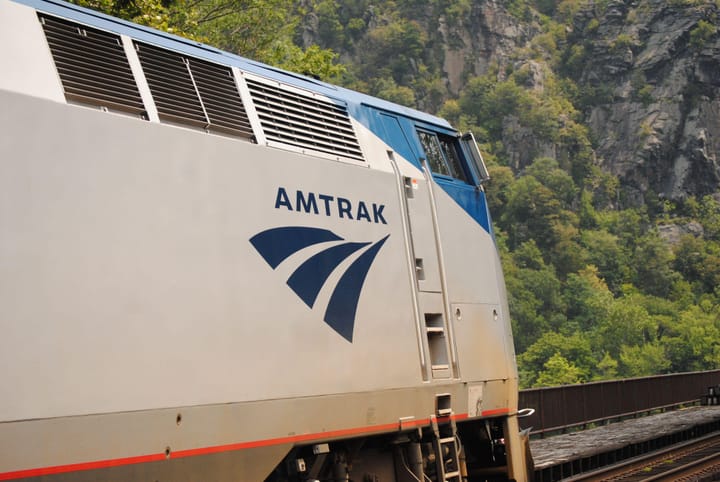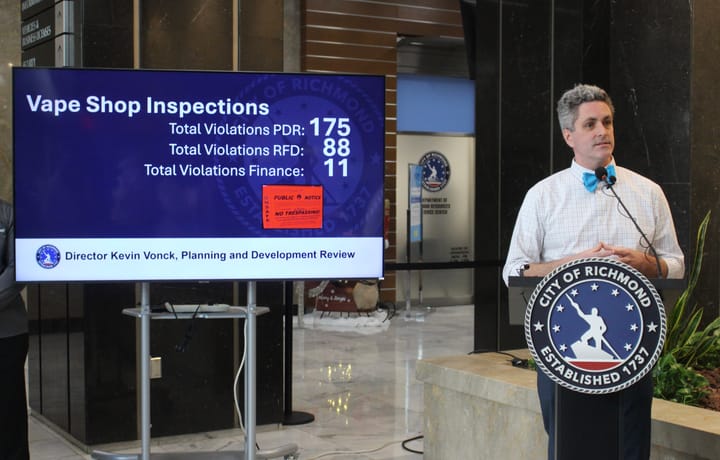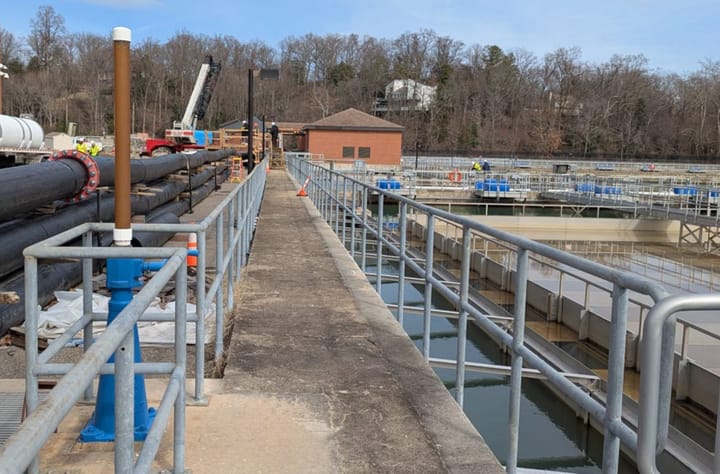Mosby Street bus platform experiment showing few changes in driver behavior so far
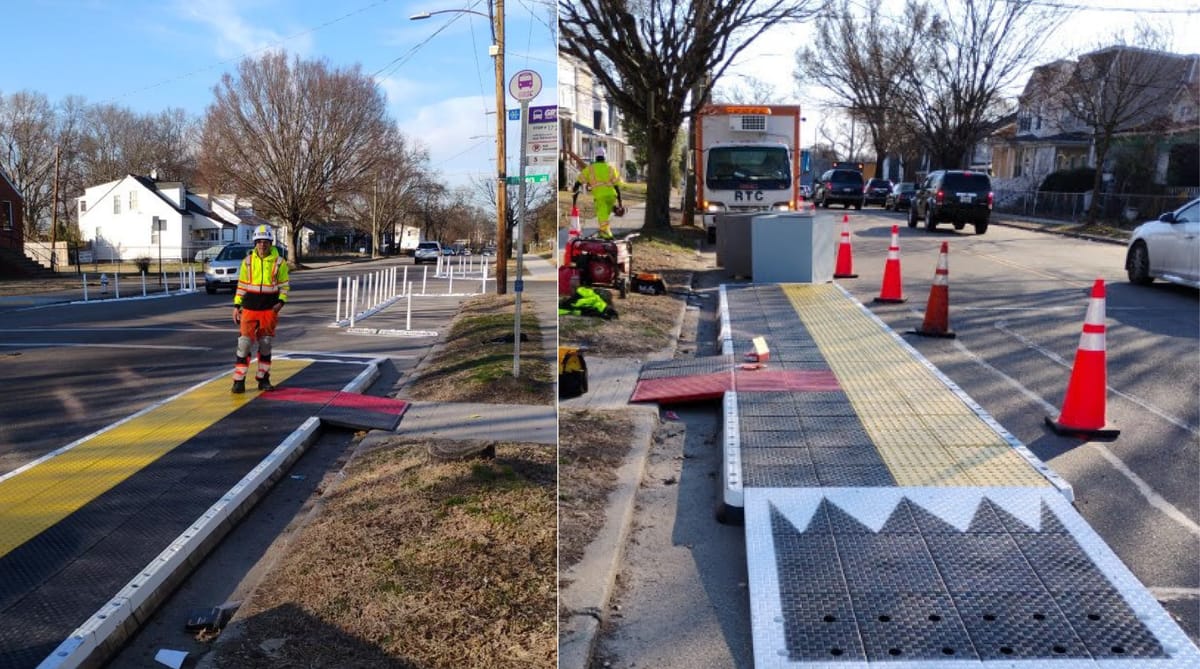
An experiment that attempts to slow down traffic by placing a temporary bus platform in the street hasn’t produced many changes in driver behavior so far.
“The big takeaway is we really didn't see that big of a change in the overall percentages of how often is a car passing the bus,” Kelli Rowan, a project manager with Richmond’s Office of Equitable Transit and Mobility, told the Planning Commission last week. “About the same number of people are passing.”
The bus platform, which is made of recycled plastic and was imported from Spain, is part of a broader effort by transportation officials to calm traffic along the Mechanicsville Turnpike-Mosby Street corridor that passes by Martin Luther King Jr. Middle School and Mosby Court.
Through its Lighter, Quicker, Cheaper program, the city has installed an array of plastic yellow posts to narrow travel lanes and had students paint murals inside them in the hopes of slowing speeds.
The Planning Commission has been more skeptical when it comes to the temporary bus platform that city staffers have installed in the road near its intersection with Brauers Lane. Because the platform sits adjacent to the curb, buses picking up riders have to halt in the travel lane, slowing traffic at the same time. Planners have said the approach works elsewhere and is backed by traffic engineers, but commissioners worried it could create new hazards by spurring even more drivers to pull into the opposing lane.”
Those fears haven’t been borne out, said Rowan last week, but neither have significant improvements in driver behavior.
To evaluate how the platform and the other traffic calming devices are functioning, the Office of Equitable Transit and Mobility distributed paper surveys to riders, most of whom lived in the neighborhood, conducted its own observations at the platform and surveyed drivers who serve the stop.
Riders and residents were largely enthusiastic, telling staffers the platform “makes the bus driver slow down” and reporting that they felt “safer.”
The 23 bus drivers who provided feedback, though, reported few changes. Before installation, eight drivers said cars “always” or “often” passed them at the Brauers stop. Afterward, that number dropped to seven. Reports of drivers crossing the double yellow line to pass the bus actually rose very slightly.
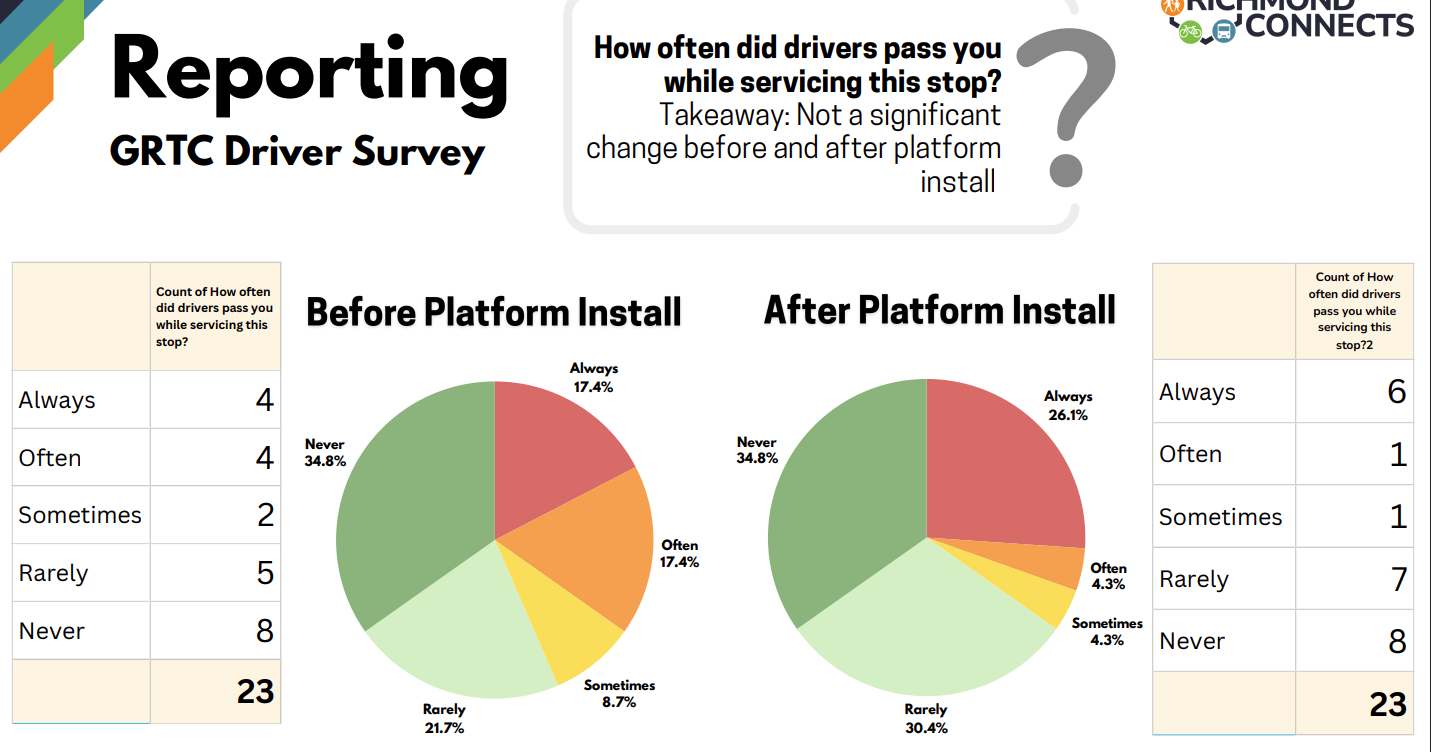
City staff who conducted observations also found that roughly one out of every three times the bus stopped, a car passed it — about the same percentage seen before platform installation.
“Oddly enough, which I'm sure there's some psychological explanation for it, but when it would be just one car stopped behind the bus, they would more often pass than if there were multiple cars,” said Rowan.
Rowan said a city engineer has recommended the office continue to monitor the platform but not take any steps to “harden” the double yellow line by installing posts or other structures on it to physically prevent drivers from crossing it.
“Our engineer said hold off, that it a lot of times creates more problems than it solves, because people are hitting flex posts and then they're in the street, and now there's debris in the street and someone trying to go around the bus,” said Rowan. “So he wants us to wait before we move forward with that. But that is still on the table.”
The office intends to monitor the platform for another six months.
Contact Reporter Sarah Vogelsong at svogelsong@richmonder.org
The Richmonder is powered by your donations. For just $9.99 a month, you can join the 1,000+ donors who are keeping quality local journalism alive in Richmond.


